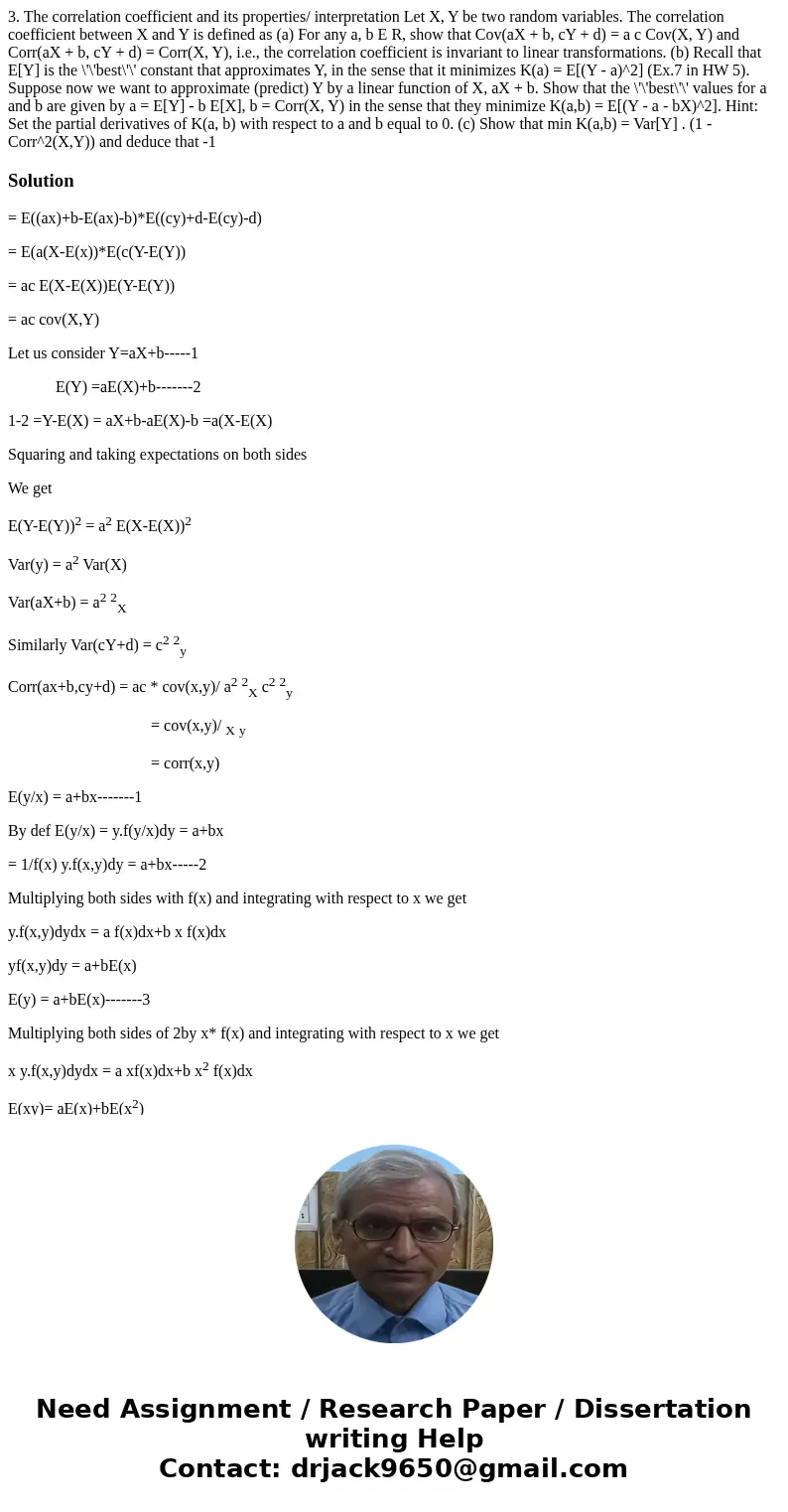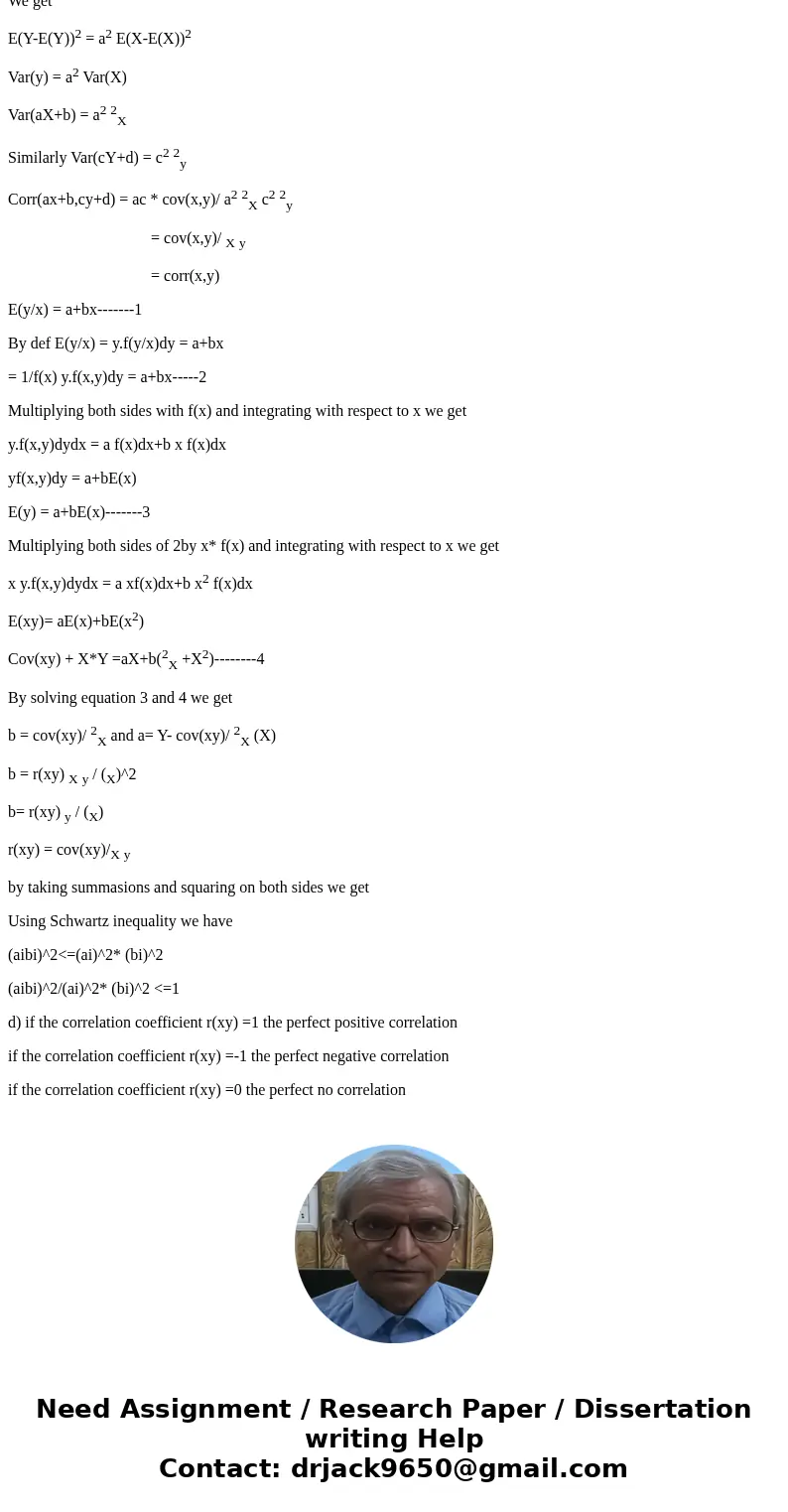3 The correlation coefficient and its properties interpretat
Solution
= E((ax)+b-E(ax)-b)*E((cy)+d-E(cy)-d)
= E(a(X-E(x))*E(c(Y-E(Y))
= ac E(X-E(X))E(Y-E(Y))
= ac cov(X,Y)
Let us consider Y=aX+b-----1
E(Y) =aE(X)+b-------2
1-2 =Y-E(X) = aX+b-aE(X)-b =a(X-E(X)
Squaring and taking expectations on both sides
We get
E(Y-E(Y))2 = a2 E(X-E(X))2
Var(y) = a2 Var(X)
Var(aX+b) = a2 2X
Similarly Var(cY+d) = c2 2y
Corr(ax+b,cy+d) = ac * cov(x,y)/ a2 2X c2 2y
= cov(x,y)/ X y
= corr(x,y)
E(y/x) = a+bx-------1
By def E(y/x) = y.f(y/x)dy = a+bx
= 1/f(x) y.f(x,y)dy = a+bx-----2
Multiplying both sides with f(x) and integrating with respect to x we get
y.f(x,y)dydx = a f(x)dx+b x f(x)dx
yf(x,y)dy = a+bE(x)
E(y) = a+bE(x)-------3
Multiplying both sides of 2by x* f(x) and integrating with respect to x we get
x y.f(x,y)dydx = a xf(x)dx+b x2 f(x)dx
E(xy)= aE(x)+bE(x2)
Cov(xy) + X*Y =aX+b(2X +X2)--------4
By solving equation 3 and 4 we get
b = cov(xy)/ 2X and a= Y- cov(xy)/ 2X (X)
b = r(xy) X y / (X)^2
b= r(xy) y / (X)
r(xy) = cov(xy)/X y
by taking summasions and squaring on both sides we get
Using Schwartz inequality we have
(aibi)^2<=(ai)^2* (bi)^2
(aibi)^2/(ai)^2* (bi)^2 <=1
d) if the correlation coefficient r(xy) =1 the perfect positive correlation
if the correlation coefficient r(xy) =-1 the perfect negative correlation
if the correlation coefficient r(xy) =0 the perfect no correlation


 Homework Sourse
Homework Sourse